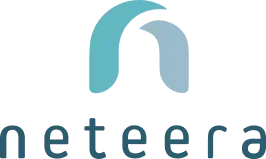Chronic obstructive pulmonary disease (COPD), encompassing conditions like emphysema and obstructive bronchiolitis, is a progressive disease marked by airway blockage and breathing difficulties. COPD patients face constant threats from flare-ups, known as exacerbations, which lead to emergency hospitalizations and significant health deterioration.
Globally, COPD presents a critical challenge to healthcare systems due to its high prevalence, economic burden, and underdiagnosis. However, remote patient monitoring (RPM) offers a powerful solution to detect early warning signs, improve care coordination, and enhance the quality of life for COPD patients.
COPD in Numbers
Global prevalence: COPD affects approximately 320 million people worldwide, including 30 million Americans.
Economic impact: Annual, estimated COPD-related costs reach $52.4 billion in the U.S. and $45.4 billion in the EU.
Leading cause of death: COPD is the third leading cause of death globally, accounting for 3.23 million deaths in 2019. Projections estimate over 5.4 million deaths annually by 2060.
Underdiagnosis: Many patients do not seek medical care until the disease is advanced, leading to inconsistent data on prevalence and missed opportunities for early intervention.
Challenges in COPD Care
1. Limited access to pulmonologists
In the U.S., access to pulmonologists is heavily skewed toward urban areas. A study found that only:
- 38.3% of individuals in urban clusters have access to a pulmonologist within 10 miles.
- 34.5% of rural residents have access to specialized care.
In remote areas, the patient-to-pulmonologist ratio can exceed 6,720:1, forcing many COPD patients to rely on general practitioners, often leading to suboptimal care.
2. Underdiagnosis and delayed treatment
COPD is frequently underdiagnosed, as many patients only seek medical attention in the disease’s late stages.
This delay:
- Increases disease severity at the time of diagnosis
- Limits the effectiveness of preventive and therapeutic interventions
3. Economic and social consequences
COPD patients face a higher risk of comorbidities such as cardiovascular disease, asthma, and sleep apnea. These conditions further escalate healthcare costs and strain resources. Additionally, hospital readmissions for exacerbations create a significant economic burden for healthcare systems.
How Remote Patient Monitoring Transforms COPD Care
Remote patient monitoring empowers caregivers and healthcare providers to manage COPD more effectively, enabling proactive and preventive care. Remote patient monitoring of vital signs can help address key challenges in COPD management.
Early detection of exacerbations
COPD exacerbations often present as:
- Rapid, shallow breathing patterns
- Changes in respiratory rate, amplitude, and inhale/exhale (I/E) ratio
With detection of these early warning signs in real time, healthcare providers are enabled to intervene before the condition worsens. Early detection can prevent complications, reduce hospital readmissions, and improve patient outcomes.
Personalized Monitoring Without Patient Involvement
Healthcare settings that chose passive patient monitoring systems can alleviate common barriers to technology adoption among COPD patients:
- No need for patients to connect to the device each time
- No active involvement required to check vitals
- Continuous monitoring allows patients to maintain their normal routines
This frictionless approach ensures patients receive personalized care without added stress or complexity.
Empowering Pulmonary Rehabilitation
Pulmonary rehabilitation combines education and exercise to improve lung health and overall well-being. With an RPM platform, patients can participate in these programs with greater confidence, knowing their vitals are continuously monitored.
Addressing Key Challenges
Improved Workflow for Providers
A passive RPM platform streamlines workflows for healthcare providers by:
- Reducing the time spent on manual vital sign monitoring
- Delivering real-time clinical-grade data to physicians and caregivers
- Automating notifications when a patient’s vitals fall outside predefined thresholds
Better patient outcomes
Continuous monitoring enables:
- Timely interventions for exacerbations, reducing the risk of hospitalization
- Early identification of comorbidities, such as cardiovascular complications or pneumonia
- Enhanced quality of life through proactive care and reduced patient stress
Real Benefits of Continuous Monitoring
Reducing hospital readmissions and emergency care costs can alleviate the financial strain on patients and healthcare systems.
Seamless data integration
An RPM platform that integrates effortlessly with existing electronic health record (EHR) systems helps ensure providers have access to comprehensive patient data.
Patient-centered design
An RPM offers monitoring without interrupting daily routines. Patients can focus on their health while providers receive actionable insights.
Managing COPD With the Neteera System
Neteera’s continuous contactless patient monitoring solution addresses the growing need for personalized COPD care by providing:
- Accurate respiratory rate tracking: Captures changes in breathing patterns in real time.
- Continuous monitoring: Delivers 24/7 insights into a patient’s condition.
- Proactive interventions: Enables early intervention with real-time data and trend analysis.
With Neteera, COPD management doesn’t have to be reactive—it’s can be preventive and proactive.
Partner With Neteera to Enhance COPD Care
The Neteera System offers a game-changing passive solution for managing COPD patients. By combining cutting-edge precision sensing technology with patient-centered care, we enable providers to enhance outcomes, minimize costs, and improve workflows.
Contact Us Today to Learn More and Schedule a Demo!
Relevant FAQs for This Blog
1. How does Neteera’s platform help manage COPD?
Neteera provides continuous monitoring of vital signs like respiratory rate and I/E ratio, which can aid early detection of exacerbations and proactive interventions.
2. Why is respiratory rate important for COPD patients?
Respiratory rate is a critical indicator of lung function and can signal early signs of health deterioration, allowing for timely medical attention.
3. How can the Neteera System allow healthcare professionals to reduce hospital readmissions?
With the data provided by the Neteera System, healthcare professionals may identify changes in a patient’s condition before symptoms escalate, potentially helping to prevent exacerbations that often lead to hospitalizations.
4. Do COPD patients have to interact with the Neteera platform?
No, Neteera’s device requires no involvement or contact with patients, making it a seamless solution for daily monitoring.
5. Can the Neteera System integrate with existing EHRs?
Yes, Neteera’s platform integrates with various EHR systems, helping ensure providers have access to patient data.
6. How does remote monitoring improve pulmonary rehabilitation?
Continuous monitoring during rehabilitation programs provides patients and providers with real-time insights, fostering confidence and enhancing outcomes.


